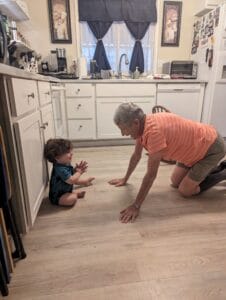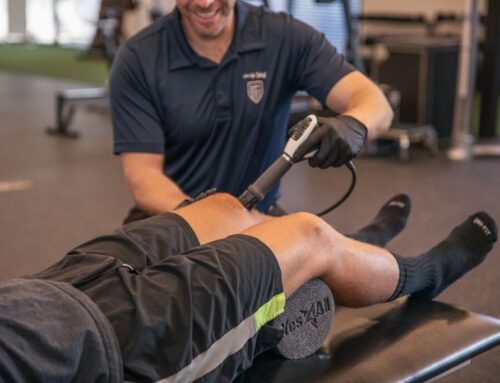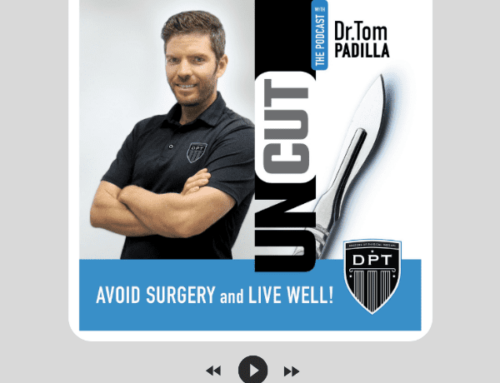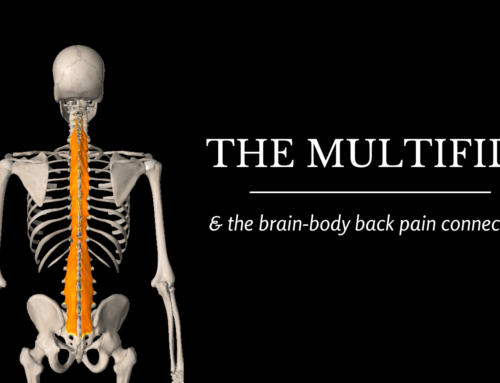
Recently I gave a talk to a group of individuals about physical medicine 3.0, and what life needs to look like in your 40’s and 50’s to ensure it looks like what you want it to in your 80’s and 90’s. Most of us don’t give it much thought. We’re walking around still feeling like we’re invincible, and so caught up in the day-to-day that we don’t really analyze this. We take for granted that we will be strong, that we will be able to do the things we want to do on a daily basis, travel, play with grand-kids, and be independent. I asked the group two questions.
Question 1
Which of your previous decades (take all the memories, the good and the bad) would you willingly just erase from your life?
Question 2
If the answer is “none of them,” the next question was: “What are you doing right now, to make sure that you aren’t actually giving up a future one?”
The good news is that healthcare is getting really good at helping us live longer. The bad news is that we are lengthening our lives without preparing our bodies, so we are seeing more and more people living longer as disabled, or without the ability to be independent. The biggest reason for this is our medical system is built upon being reactive, rather than proactive. Rather than figure out how to prevent injury, or someone needing a hip replacement, we wait until they do, and intervene then. By and large, this is consumer driven. The quick fix, the pill, the injection that seems to restore things back to normal in the short-term, only to have them come back later, requiring more intervention. Very few consider the long-term implications of these band-aid type solutions until the consequences affect them personally.
The above example is being reactive to pain, but what about when we’re talking about living a high quality life? Many of us don’t give our physical abilities a second thought, until they start to become restricted, and our independence threatened. The picture in this month’s article is my 85-year-old grandmother on the floor with Jack. In order for her to be able to do this, she has to be able to get on and off the floor without support. In order to lift and carry him, she needs to be able to hold 25 pounds. So the question becomes, what are you doing right now to ensure that you can get on and off the floor unsupported, and lift 25 pounds when you’re 85?
The reality is that after our early to mid 30’s, if we do nothing to increase our strength and health, we begin losing it at a steady rate each decade. To maintain good physical health we are talking about 4 key areas. These areas are: stability, strength, aerobic fitness, and anaerobic fitness. We have to train these key areas NOW for what we want to do when we’re 85. For example: when you’re 85, do you want to still be able to lift your 30 pound suitcase into an overhead bin by yourself? Get on and off the floor? Pick up a grandchild from the floor? Walk up a few flights of stairs with a backpack without getting winded? Hike with your friends and family? Can you do these things now?
If you CAN do these things now, that’s a good start. When we factor in the fact that there will be a decline each decade, we realize that we need to be able to do much MORE than this, NOW (depending on what decade of life you’re in). For example: picking up a 25 pound child from the ground when you’re 85, may translate to being able to pick up a 50 pound weight from the ground when you’re 65, and a 60 pound weight when you’re 55. If that makes you uncomfortable, chances are you are aware that a change needs to be made. If you’re in your 50’s and a few flights of stairs or an easy hike gets you winded, and you want to be able to do those things in your 70’s, chances are you need to act now. The key here is to write a list of things you want to be able to do in your 80’s. Then have an honest moment with yourself and ask yourself if your current level of abilities declines steadily from today (roughly 10% per decade), if you can see yourself being able to do those things.
If you’re already being proactive about this, then congratulations, you’re already in the top 5% of people. If you’re getting uncomfortable, uneasy, and don’t know where to start, then let us help you. Getting into a routine can be daunting, and the most important part is to know where you are currently (point A) and where you want to get to (point B). If having a high quality of life throughout your latest decades is important, your first point B will be a few levels higher than you want to be at that stage. Your next point B will be being able to maintain that level as high as possible for as long as possible.
If you’re currently limited by pain, we will start there with physical therapy, massage, or our regenerative services depending on your needs. If you’re not in pain, you may be a good fit for our wellness and performance programs (P3). Give us a call and ask about getting a strength and mobility assessment. We’d love nothing more than helping you ensure that 85 looks exactly as you imagined it would.





